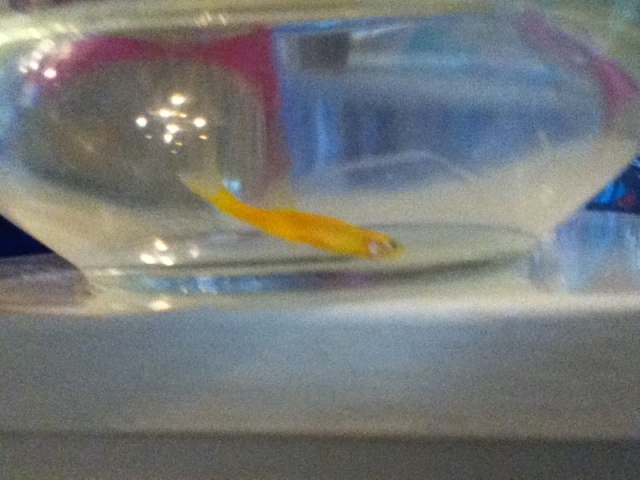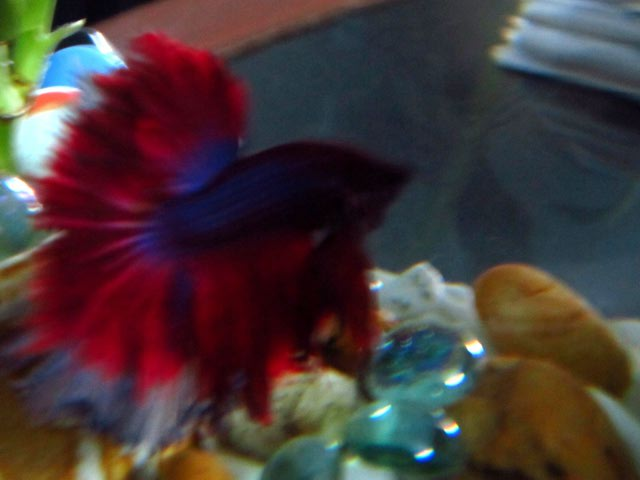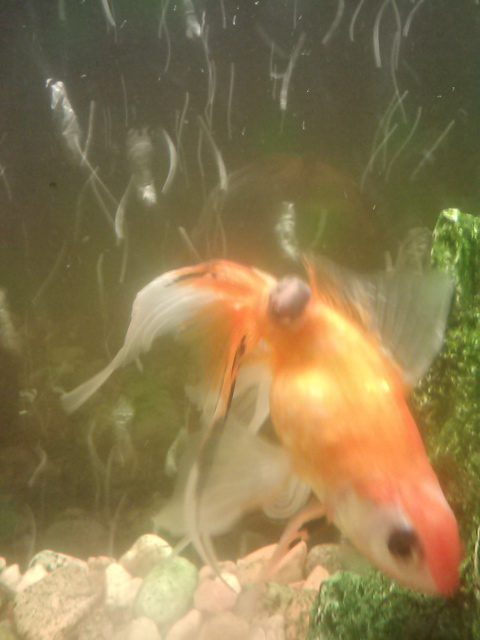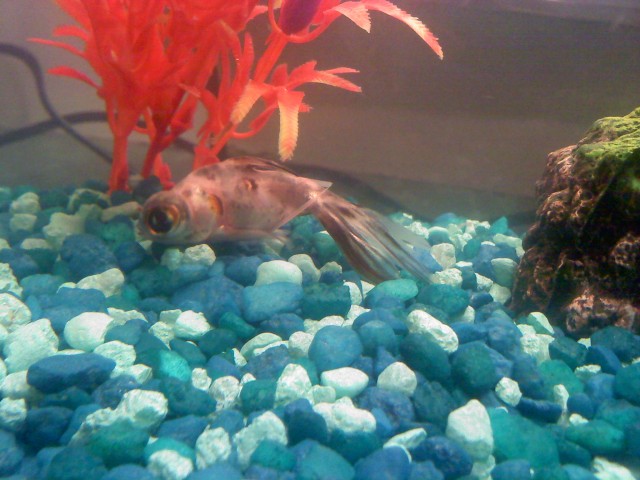QuestionQUESTION: How I do a water change? There is too much amonia in the water and the ph is high. What type of water do I use?I have a 10 gallon tank with an mini angel fish, 1 blue grummie, 2 bottom feeder cat fish, everyone tells me different things. thank you, in advance, for helping me, I love my fish.
ANSWER: Good morning Linda, thank you for your question.
That angelfish is mini now, but will outgrow your tank in a few months. If you don't plan on upgrading to a larger tank, you will be much better off trading it in now. Angelfish are sensitive to water quality and thus environmental diseases such as fin rot. Let me refer you to this page:
http://freshaquarium.about.com/od/aquariumstartup/Aquarium_Startup.htm
It has all you need to know. Read as much as you can!
The easiest way to do a water change is to siphon the water out. A simple piece of hose can accomplish this. Just suck on the end and the water will start flowing out. Most people use a gravel vacuum because it cleans the gravel bed while you change the water. You just move the head of the vac up and down vigorously, in a continuous motion, and siphon the water into a bucket below the tank. The siphon starts in a few seconds, be ready! You also need dechlorinator...
This is imperative. The chlorine in tap water is toxic to fish. Get yourself a dechlorinator such as Prime, by Seachem. If you buy your products from Walmart instead of a pet store, Jungle's Start Right would be my suggestion. Do *not* use a product that removes ammonia such as AmQuel or A.C.E. as this will cause serious problems in the long run.
You need to perform some water changes ASAP. Even if you just scoop the water out using a pitcher! Ammonia is very toxic to fish. A healthy tank that is cycled (established, with beneficial bacteria colonies in the filter media and gravel - read all about it on about.com's Aquarium Startup) never shows this level or nitrite. Nitrate can be as high as 20 ppm, but preferably lower. These levels can be tested using a test kit, the liquid kinds (such as those made by API) are more accurate and a better value than strips.
A blue gourami, if he is a three-spot, will be too big in time for your 10 gallon also. However a dwarf gourami (which can be different colors, marbled blue and red usually) is fine for your sized system, except dwarf gouramis aren't very hardy. When you're new to fishkeeping and just starting out, it's best to pick hardy fish. A paradisefish instead of a gourami would have been my choice. Cherry barbs, zebra danios, brilliant rasboras, and a few tetras such as black widow tetras, are a few examples of hardy fish.
There is so much more knowledge I would like to impart to you, but reading a book would be much more practical. Go to the library and see if they have any books in 639.64 - or check out a book at Barnes and Noble called "The Simple Guide to Freshwater Aquariums" by David Boruchowitz.
Google is your friend when looking up species care! Just type the common name in and sift through results (you'll need the correct spelling, however) or browse here:
http://fishinthe.net
http://www.fishprofiles.com
Good luck, Linda. Thank you for writing in, and take care!
Nicole
---------- FOLLOW-UP ----------
QUESTION: nocole:
I did all ou suggested - now my water is cloudy. What is this?
AnswerHi Linda,
When your tank has high levels of ammonia, the priority is to remove the ammonia to preserve your fish. Fish die in the presence of ammonia, it literally starves their blood of oxygen. Unfortunately, doing water changes forestalls the establishment of the beneficial bacteria - it delays the "cycling" of your tank. That's why it's always best to "fishless cycle" your tank before adding fish. You accomplish this by putting a piece of shrimp in the tank as an ammonia source (after having your equipment set up) and then leaving the tank to sit, for about one week.
The shrimp degrades, providing ammonia - just like live fish do. Only by the time you're ready to add live fish, the ammonia levels have risen and then fallen, the same with the nitrites, and then at the end of the week you see these two levels are zero, with a trace of nitrates. This means your tank is cycled. Your tank isn't cycled yet - the ammonia levels are still rising and falling, the same with the nitrites. Eventually, both these levels will be at 0 ppm - but not for some time, due to the daily water changes.
Even if it makes the cycling process take longer, it is still highly recommended, since you cannot keep your fish alive and healthy in a tank registering ammonia and nitrites. In short, you have to dilute the two toxic levels with daily water changes, for the safety of your fish. Even if it means that cycling will take longer. Make sense?
Read here for more information:
http://freshaquarium.about.com/cs/qa/f/faq0015.htm
Keep up those water changes. The cloudy water may be unsightly, but they need to be performed - if your tank is still registering ammonia and nitrites. Test your water about every day for a week. Eventually the cloudy water will stop recurring and the levels will be where they should be - in other words, your tank *will* eventually cycle.
Thanks for writing. Keep up the reading and water changes!
Nicole

 glofish tail elongated
Questionsick glofish 2
sick glofish
QUEST
glofish tail elongated
Questionsick glofish 2
sick glofish
QUEST
 Goldfish diseases
Question
Fantail goldfish
Hi Jaymie,
&nb
Goldfish diseases
Question
Fantail goldfish
Hi Jaymie,
&nb
 Taking Bettas 36 hrs in train
QuestionQUESTION: Dear Jaymie,
Im from India- in the so
Taking Bettas 36 hrs in train
QuestionQUESTION: Dear Jaymie,
Im from India- in the so
 Lump on Fantail
Question
Fantail
We have a generic fantail goldf
Lump on Fantail
Question
Fantail
We have a generic fantail goldf
 Goldfish On Bottom Of Tank
Question
Patches on the bottom
Hi.
I have two goldfish,
Goldfish On Bottom Of Tank
Question
Patches on the bottom
Hi.
I have two goldfish,